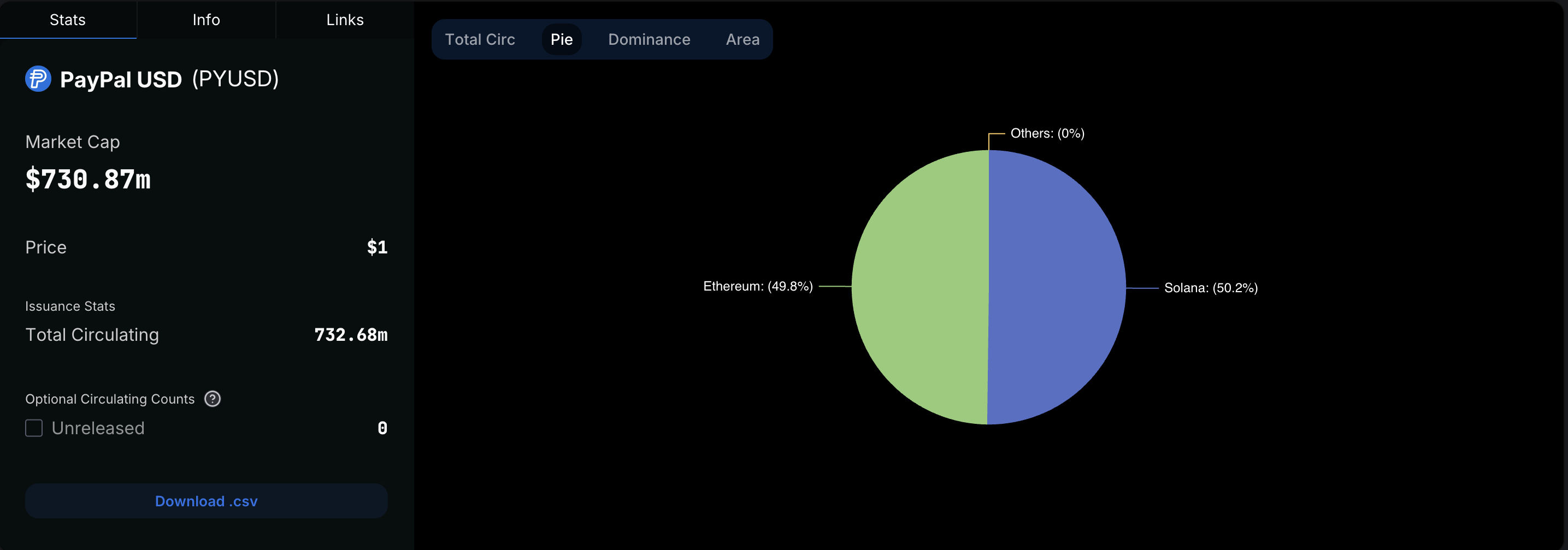According to PayPal’s Vice President of Blockchain, Crypto, and Digital Currencies (BCDC), Jose Fernandez da Ponte, Ethereum (ETH) is not an optimal choice for payment processing.
Ethereum’s Limitations for Payment Solutions
During his address at the Solana Breakpoint 2024 conference, Ponte highlighted Ethereum’s struggle with handling high transaction volumes as a significant factor behind PayPal’s decision to deploy its dollar-pegged stablecoin, PYUSD, on the competing smart contract platform Solana (SOL).
Initially, PayPal launched the PYUSD stablecoin in August 2023 on the Ethereum network. However, by May 2024, the stablecoin was made available on the Solana blockchain, reinforcing it as the preferred network due to its capability to facilitate “massive transaction volumes at rapid speeds and with minimal costs.”

Ponte pointed out that an effective payment network should be capable of handling a minimum of 1,000 transactions per second (tps), a benchmark that the Ethereum network often fails to meet consistently.
He further stated that it is not only transaction speed or network throughput that matters, but also the advantages provided by token extensions that make Solana an attractive foundation for PayPal’s dollar-pegged stablecoin, PYUSD. Ponte remarked:
There is transaction confidentiality and the ability to manage transaction fees. Consequently, Solana was a straightforward choice when we considered our next blockchain, particularly because of its Token Extension features.
For those who may not be familiar, Solana’s token extensions enhance token functionality, allowing for capabilities such as transfer limitations and multi-signature authorizations.
These improvements are advantageous in payments as they enable developers to create tailored payment workflows, automate certain tasks, and bolster transaction security. Token extensions provide PYUSD with the ability to customize payment management according to specific conditions or requirements.
Importantly, two former senior members from Coinbase have recently established their crypto exchange, TrueX, which will utilize PYUSD as its “preferred token for transactions.” Not surprisingly, PYUSD has already achieved a market capitalization exceeding $730 million and is expected to continue affecting the market share of top stablecoins like USDT and USDC.
Is the ETH Ecosystem Ready for Retail Adoption?
Ponte’s observations are not unexpected considering the circumstances. To make stablecoins widely accepted, the underlying network must demonstrate robust throughput and low transaction costs. While Ethereum’s Dencun upgrade aimed to considerably reduce gas fees, it remains significantly higher than the negligible fees associated with networks like Solana, Tron, and others.
There is optimism regarding the effectiveness of Ethereum layer-2 scaling solutions like Optimism, Arbitrum, and others. Currently, there are 74 Ethereum layer-2 projects, indicating a strong demand for solutions accommodating Ethereum’s scaling at affordable transaction prices.
However, there are apprehensions concerning the centralized nature of many of these layer-2 scaling options. A recent analysis suggested that centralization risks may allow network operators to gain control over user funds. As of now, Ethereum is trading at $2,540, reflecting a 4.2% increase in the preceding 24-hour period.

Featured Image from Unsplash.com, Charts from DefiLlama.com and TradingView.com








